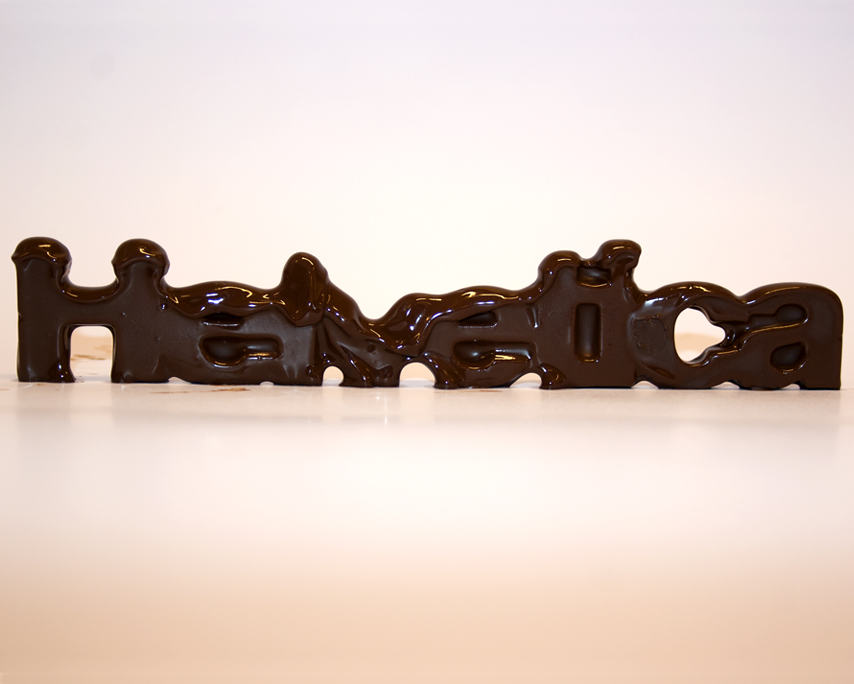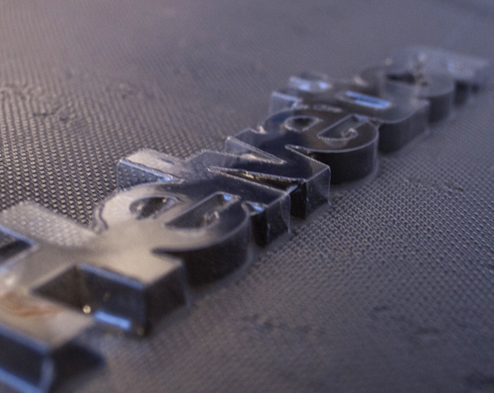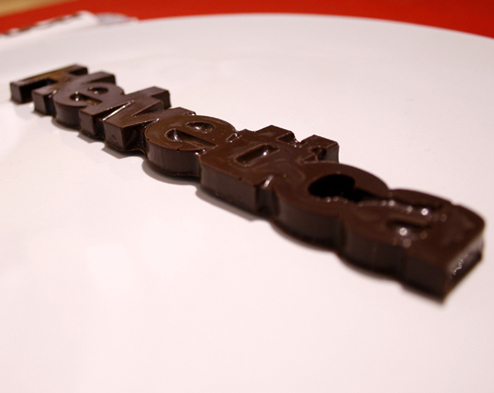Helvetica Chocolate
For people who’ve had their fill of the infamous, Swiss typeface.

When I was in my 2nd year at the Iceland Academy of the Arts, the students were to raise funds for their graduation trip the following year. My classmates and I decided to launch a sales exhibition called Grafian (a wordplay on the word “graphic” – as in graphic design – and “mafia” – since we were planning a trip to Sicily).
For some reason I knew right from the start that I wanted to play with three dimensional letterforms. I also wanted to keep the emphasis on the “play”-ful nature in the purpose the letterforms, whatever that would prove to be. At some point I thought of alphabet soups and the consumption of letters in other ways than through eyeballs. “Maybe icecube letters?”, I wondered, “or some sort of cookie dough glyphs?”
During this period, I was browsing through typefaces to see which ones could be bold enough to be made into some kind of food. When I was about to dismiss Helvetica because of its overuse in the industry, I reconsidered. Why not give people a new taste of the infamous, Swiss typeface made from – of course – one of the best chocolate produced in Switzerland?

I had the Helvetica-piece laser cut from plexiglass as a positive. Then I looked up a wrapping factory that could make a negative from the model. These negatives I brought to confectioner Hilmir Kolbeinsson who then poured the exquisite, dark Swiss chocolate into the negatives, and finally distilled and tended to the cooling process.

The resulting typographic chocolates were then put up for sale during Grafian with the remaining stock repurposed for the Association Typographique Internationale (aTypI) congress in Reykjavik that same year.
A really fun and happy ending to the Helvetica chocolate adventure was when I met Indra Kupferschmid, a Professor at the Academy of Fine Arts Saar in Saarbrücken, Germany, at the ATypI Congress. She asked if she could have two chocolate bars to show and give to a man named Alfred Hoffmann, the son of Eduard Hoffmann – one of the initiators of the original Helvetica typeface. On delivering the chocolate bars to Hoffmann, Kupferschmid was kind enough to take a couple of photos of the occasion.

A few days later, Hoffmann reach out to me himself to inform me that he had conveyed the Helvetica chocolate bars to the Basel Paper Mill, the Swiss Museum for Paper, Type and Print.